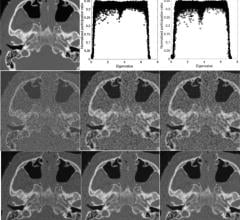
November 20, 2012 — Zonare Medical Systems is showcasing its growing family of ultrasound systems at the annual Radiology of North America (RSNA) being held in Chicago, Nov. 25 to 29, 2012. The newest member of the family, the ZS3 premium ultrasound system, will make its U.S. debut at RSNA 2012. The system provides completely focused image quality throughout the entire field of view.
“The exquisite grey scale and color Doppler imaging, along with enhanced penetration, are enabled by two-way dynamic transmit and receive focus,” said Glen McLaughlin, Ph.D., founder and chief technical officer, Zonare. “For the first time, there is a completely focused image from the first to the last millimeter, enabling significantly improved penetration such as in the abdomen. This is done on a point-by-point basis, resulting in improved detail and contrast resolution, as well as image uniformity.”
The ZS3 uses Zonare’s Living Technology, which delivers ultrasound imaging excellence based on a dynamic and open architecture that allows continual platform evolvement to meet the changing needs of clinicians. Zone Sonography technology (ZST) is fundamentally different than standard beamformer systems. It is an innovative approach to echo data acquisition and image formation. Using an optimum number of "zones," ZST acquires ultrasound data up to ten times faster than conventional systems and implements the full reality of data acquisition and management in software rather than hardware.
“The ZS3 offers superb high frequency imaging in the abdomen with enormous penetration,” said Jörg Bönhof, M.D., Stiftung Deutsch Klinik für Diagnostik, Wiesbaden, Germany. “This makes structures visible, which I have never seen before. For example, I can now visualize normal amounts of fluid around organs such as the liver, spleen and bowel even with the most challenging of patients.”
ZST enables the retention of all the channel domain data. This makes patient-specific imaging possible by tailoring the image parameters to the patient. It allows for retrospective imaging by capturing all the raw data, which can be reprocessed multiple times in many ways to optimize the image.
“The ability to basically provide the clinician with a virtual patient offers numerous retrospective imaging capabilities,” said McLaughlin. “Coupled with temporally accurate representation of underlying anatomy which is achieved through optimum data acquisition, this technology removes some of the fundamental bottlenecks of traditional beamformer systems.”
For more information: www.zonare.com


 November 03, 2025
November 03, 2025 









